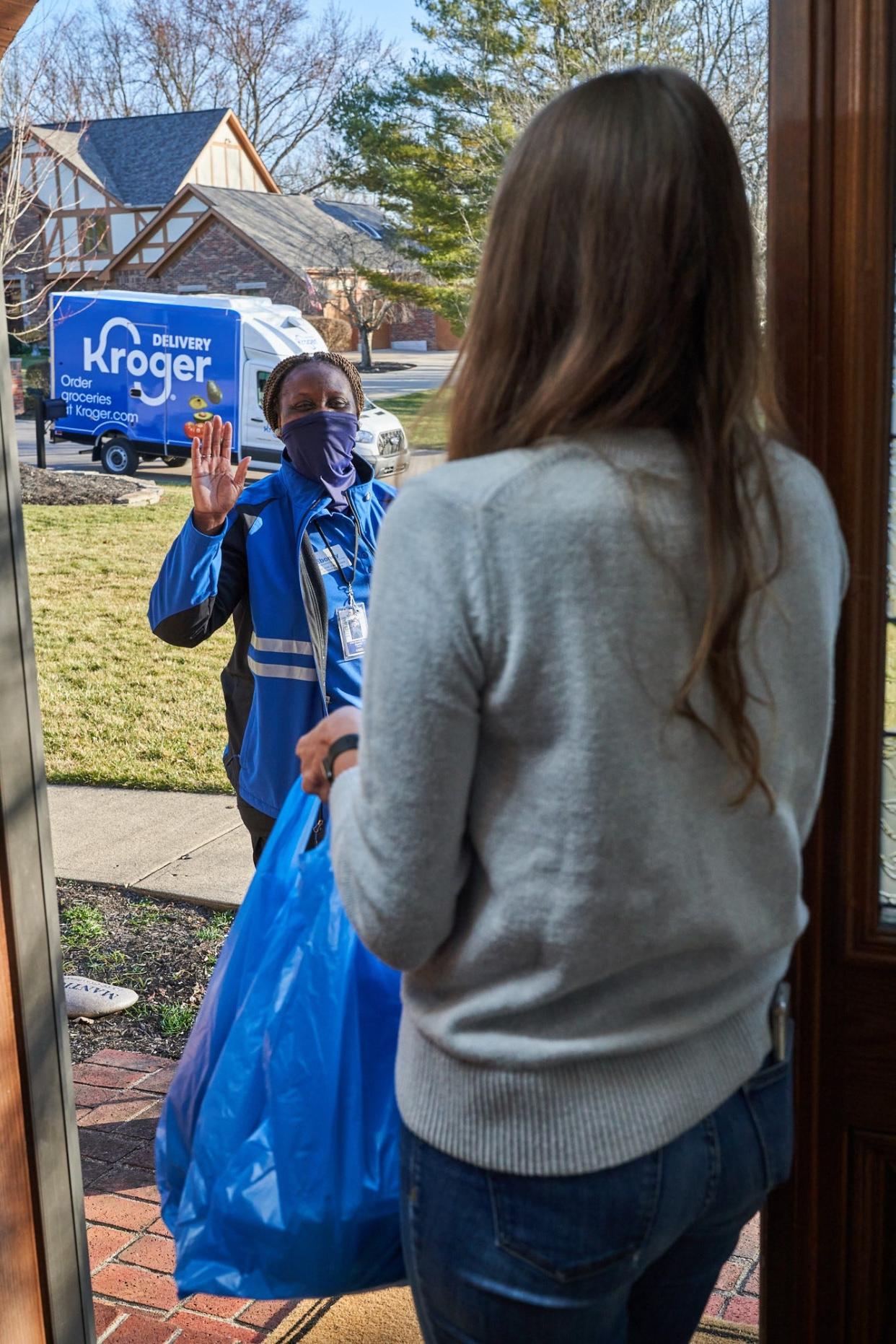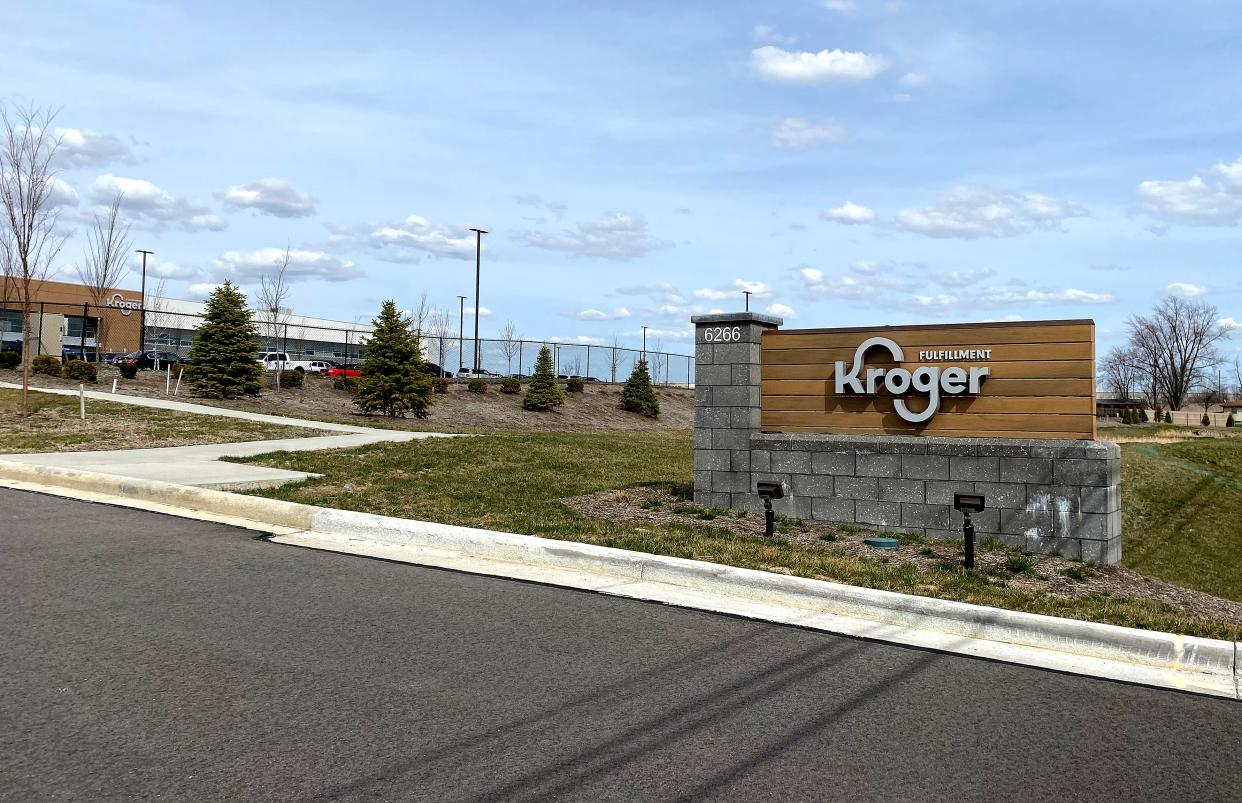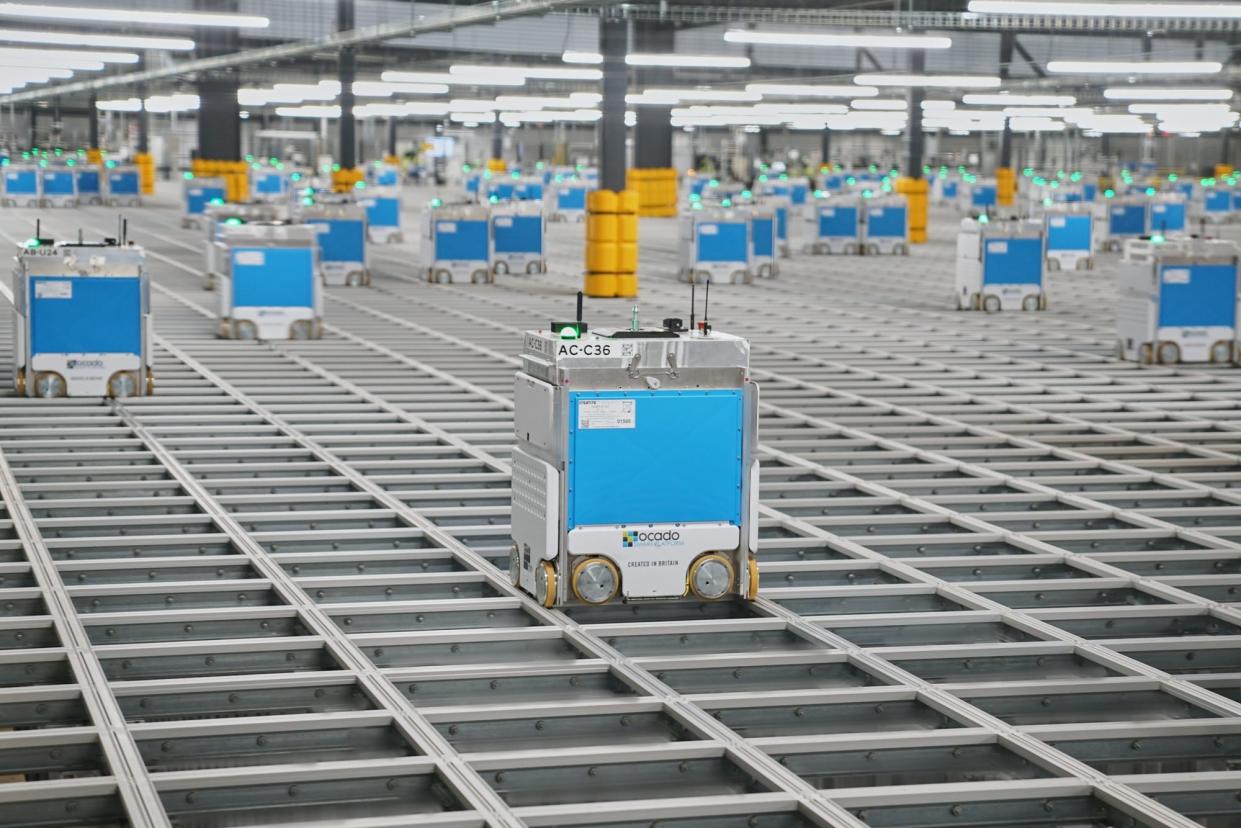Kroger went big on home delivery. Now it's pulling back
Kroger’s announcement last month it would shut down online shopping distribution facilities in Miami, Austin and San Antonio, Texas, appears to be the latest recalibration of its home delivery and digital strategy.
In a corporate filing earlier this month, the Cincinnati-based supermarket giant also disclosed it slowed the building of a planned national network of home delivery hubs, called customer fulfillment centers. Its forecasts for total digital sales have also been scaled back.
Kroger's annual digital sales climbed to $12 billion in 2023, about 8% of the company's total sales of $150 billion. But it's well shy of a $20 billion target envisioned by top executives in early 2021.

In its latest setback, Kroger said on March 27 it would shutter the three e-commerce warehouses, one in south Florida and two in central Texas.
The warehouses were an attempt to compete with other grocery chains in areas where Kroger didn't have stores. But it found it difficult to fight established regional powerhouses like H-E-B in Texas or Publix in Florida.
Kroger spokeswoman Erin Rolfes said the warehouses were closing in May because they didn’t hit the financial goals needed to keep them open. The three facilities were smaller “spoke” operations to larger “hub” customer fulfillment centers in Groveland, Florida and Dallas, Texas.
“Kroger’s commitment to innovation means that we test and learn quickly to identify the most effective ways to deliver fresh, affordable food to our customers,” Rolfes told The Enquirer. “Despite our best efforts … these facilities did not meet the benchmarks we set for success.”
Kroger shrinks its digital shopping goals
Kroger already appears to have slowed its big plans for digital shopping. In a big move, first unveiled in 2018, Kroger said it had partnered with U.K.-based online grocer Ocado to build 20 robotic warehouses to help it compete with Amazon.

The first such facility opened in Cincinnati suburb Monroe in 2021, followed by two other that year and four more in 2022. The hulking $55 million Monroe facility off Hamilton Lebanon Road in Butler County is powered by robots and was set up to process thousands of digital orders within a 90-mile radius – as far away as Dayton, Columbus, Indianapolis and Louisville.

Just before Kroger opened the Monroe warehouse hub, the grocer revealed that its digital business – which includes home delivery and online orders picked up at the store – had topped $10 billion in 2020 amid the height of the COVID-19 pandemic. The grocer also boldly proclaimed in early 2021 it wanted to double that figure by the end of 2023.
But since then, Kroger's annual digital sales have only grown 20% since 2020 − and the growth trajectory has been erratic: Sales dropped 3% in 2021, climbed 4% in 2022 and rose 12% last year.
While the company stuck with its bold sales plans for almost two years, in early 2023 it revised those figures, saying “we expect digital sales to grow at a double-digit rate.” In the government filing this early this month, it repeated that forecast.
Kroger isn't the only grocer experiencing difficulties growing digital business. Chicago e-commerce consulting firm Brick Meets Click noted online grocery sales in the U.S. slipped 1.2% last year to $95.8 billion. The firm said more customers are shopping for groceries online and placing bigger orders but doing so less frequently in the past couple of years.
'Still in a very early inning'
While retail stores are notoriously low-profit-margin businesses, Kroger’s digital business makes even less money per dollar.
“Job one is to make sure we don't lose the digital customer and job two is our responsibility to figure out how to make sure that customer is profitable,” Kroger CEO Rodney McMullen told Wall Street analysts on a March 7 conference call discussing the grocer’s 2023 financial results.
McMullen admitted on the call that Kroger’s digital profitability might not match in-store profitability for another three to five years.
Still, McMullen stressed digital was “an important part of our growth model.” He noted that online shoppers and in-store shoppers were hardly exclusive of each other. Many shoppers like doing both, he said, adding “customers who shop both in-store and online spend three to four times more compared to in-store only shoppers.”
Kroger officials said the company remained "committed" to its digital business.
“We have a pathway to get to where the margins are the same there as shopping in-store,” he told analysts. “If you think of a baseball game, we're still in a very early inning of this journey.”
This article originally appeared on Cincinnati Enquirer: Kroger rethinking its digital shopping rollout as it protects profits
